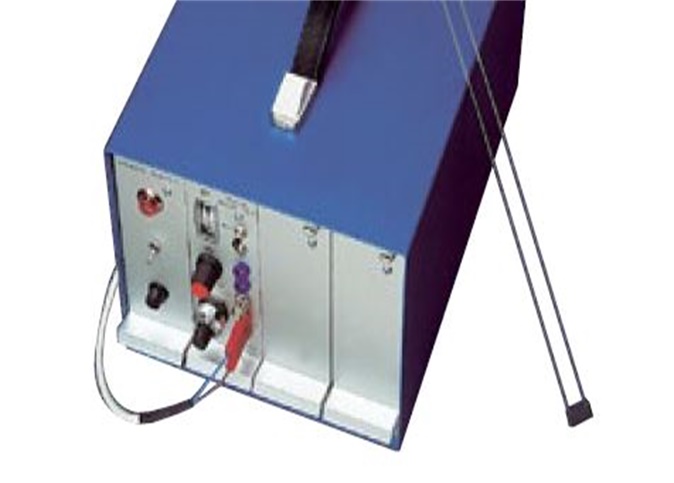Description
The H40-MKII Wave Probe Case contains the signal conditioning circuitry for up to eight wave probes and a network connection to allow a computer to configure the probes. If more than eight probes are required to be used at the same time in the physical model then multiple cases can be linked together, so that only one computer is required for configuration.
The input connections for the wave probes are provided using 4mm sockets on one face of the case. The opposite face has connections to allow the device to be directly connected to a computer via an Ethernet cable and to an existing data acquisition system using analogue signal outputs. The unit is powered from an external 24Vdc laptop-style power supply.
The wave probe case is set up using a built-in web page which is accessed from the PC using the network connection. Whilst testing is underway the data acquired by the instrument is also transmitted over the network connection for collection by appropriate software(not supplied by Armfield).
The wave probe operates by measuring the current that flows between two stainless steel wires that are immersed in water. This current is converted to an output voltage that is directly proportional to the immersed depth. Each wave probe case contains the energising and sensing circuits for the operation of eight wave probes and provides an output voltage (0-5V) for all eight channels on a 16-way output connector. In order to avoid polarisation effects at the probe, a high frequency square wave is used to energise the probe.
Adjacent probes are set to different frequencies to allow probes to be used close together without causing any interference. Each wave probe channel contains circuitry designed to compensate for the resistance of the cable that connects the probe to the wave probe unit. Without this compensation, the output of the wave probe monitor would be non-linear.
The probe output voltage is converted to a digital reading using an analogue to digital converter and the readings are batched and transmitted over the network in packets of data at a rate of 100 samples per second. The configuration process allows the user to set the output level for a given initial probe immersion. This enables the user to scale the output, from zero (no water over probe) to maximum output for a desired full scale immersion.
The wave probes comprise two parallel stainless steel rods with a plastic head and foot. The head is fixed to the calibration stem and a mounting block is supplied that allows the calibration stem to be fixed to any vertical surface.
Features & Benefits
-
Extremely linear output
-
No hysterisis
-
Reliable, proven design, easily calibrated
-
Longer distances from the data acquisition PC can be achieved by linking two wave probe cases together
-
Suppled with 8 channels as standard
-
Data can be logged directly into a computer via the network link

 Enquiry:hkmarketing@epc.com.hk
Enquiry:hkmarketing@epc.com.hk  Whatsapp Enquiry: +85261990717
Whatsapp Enquiry: +85261990717










